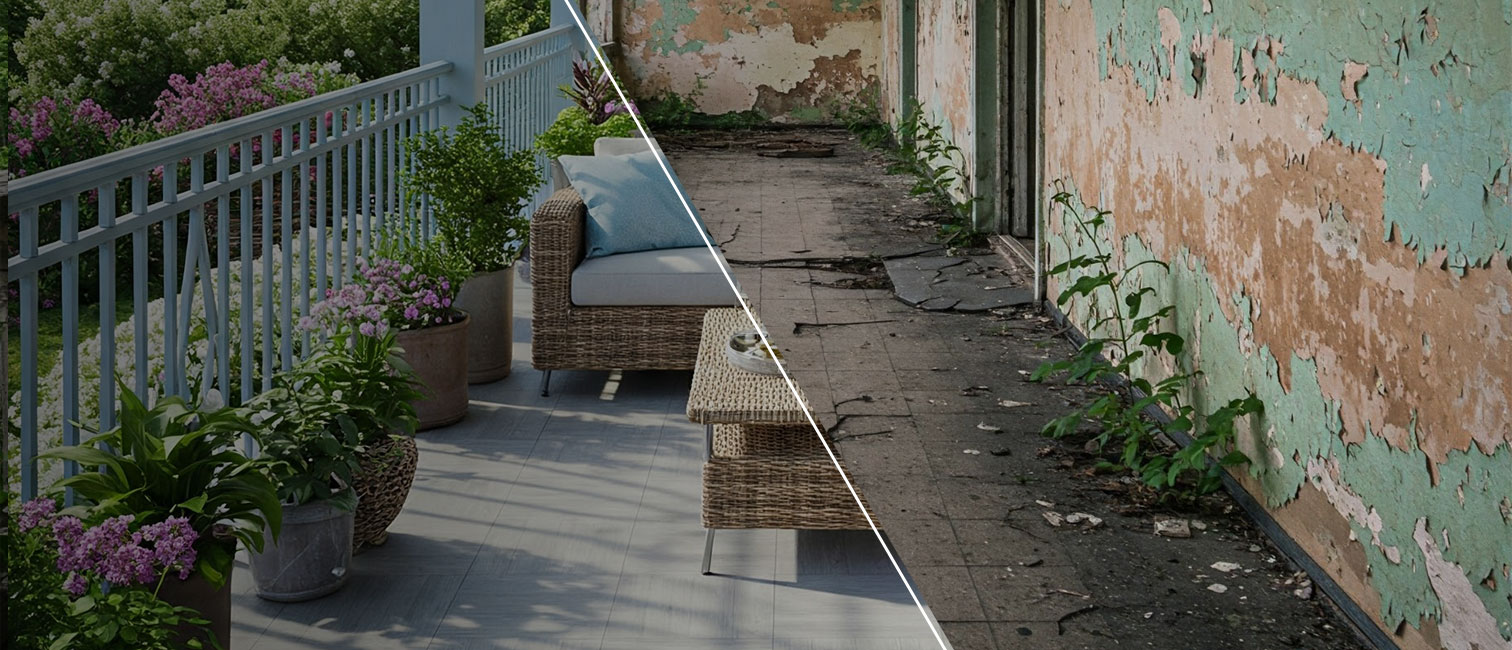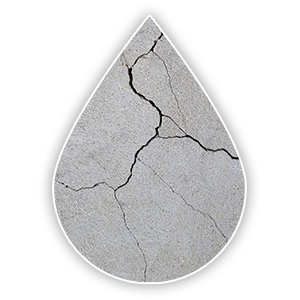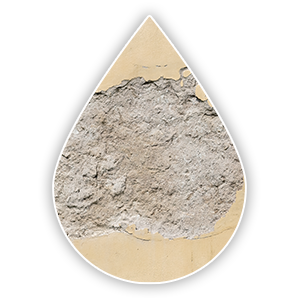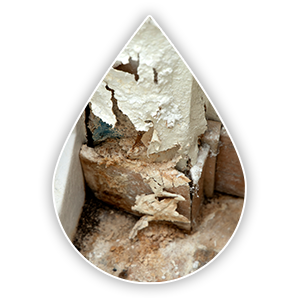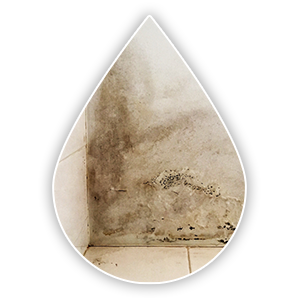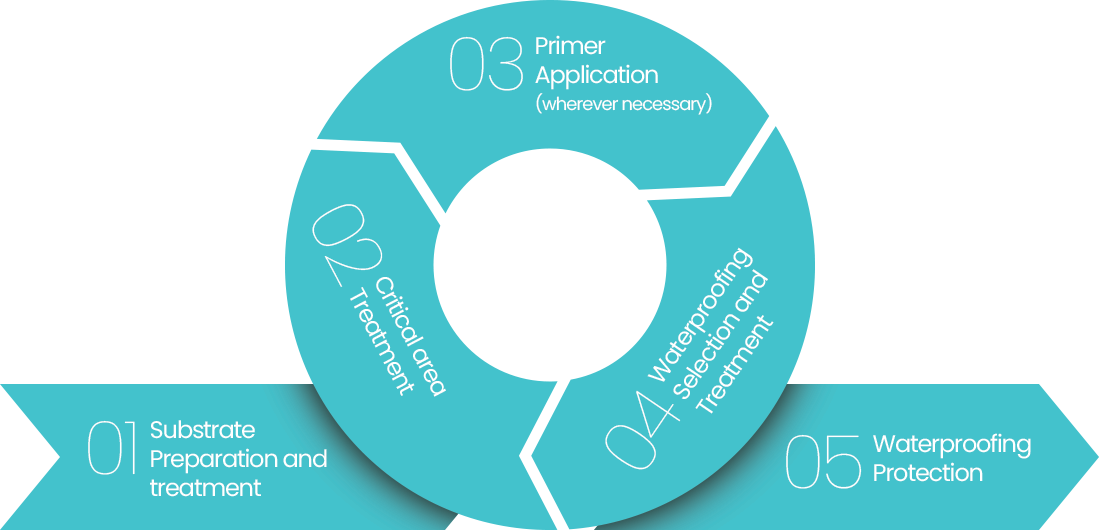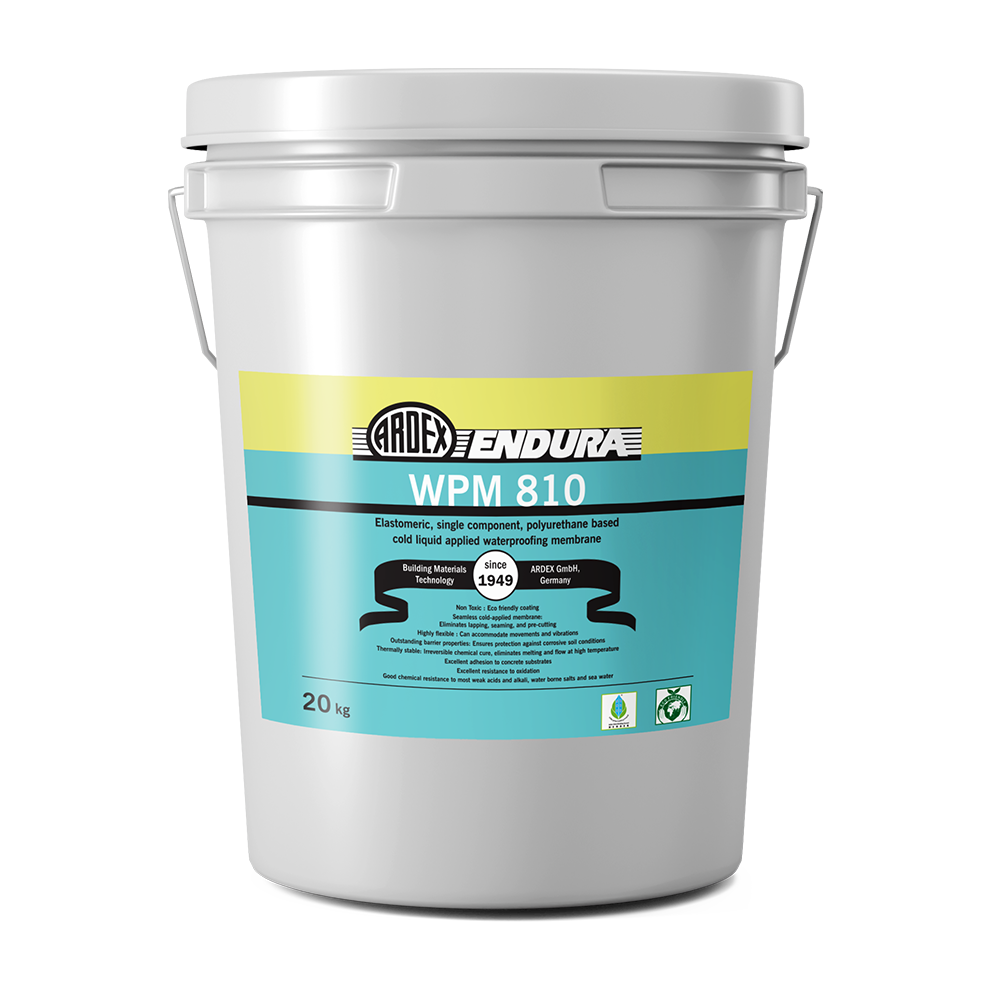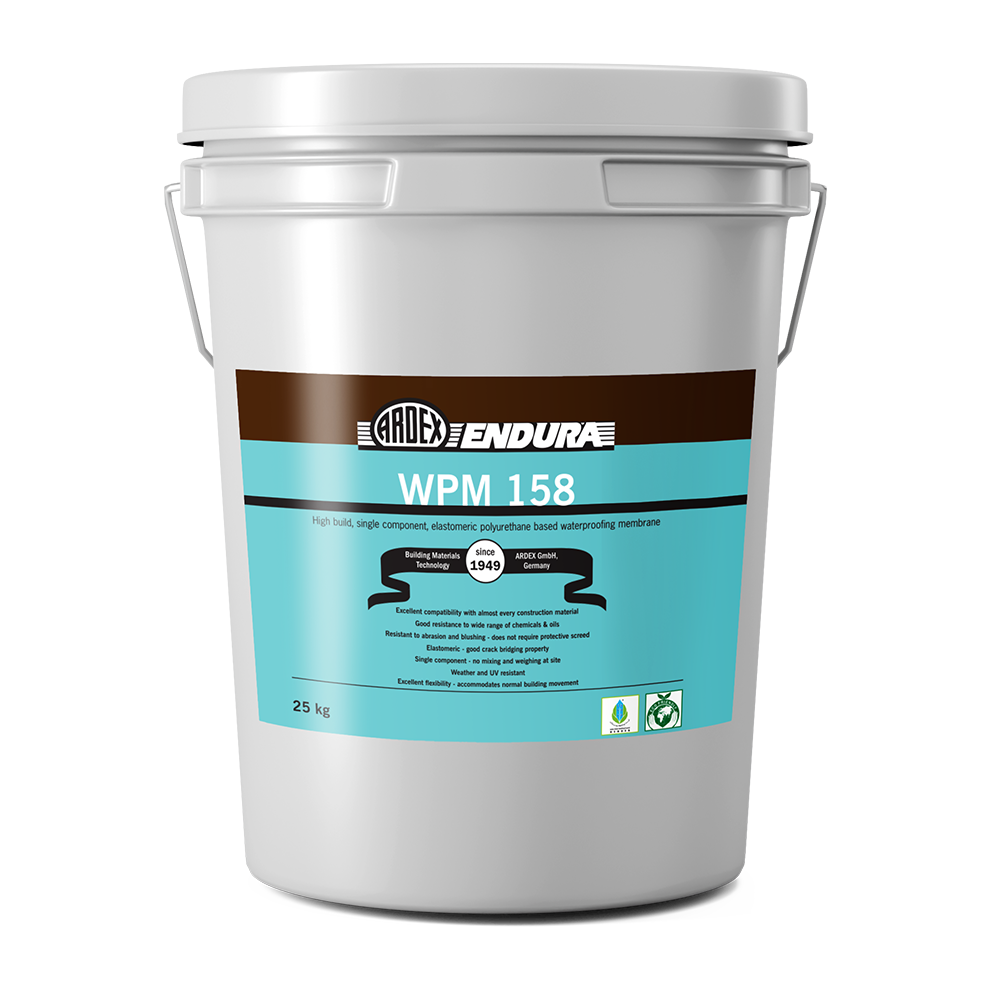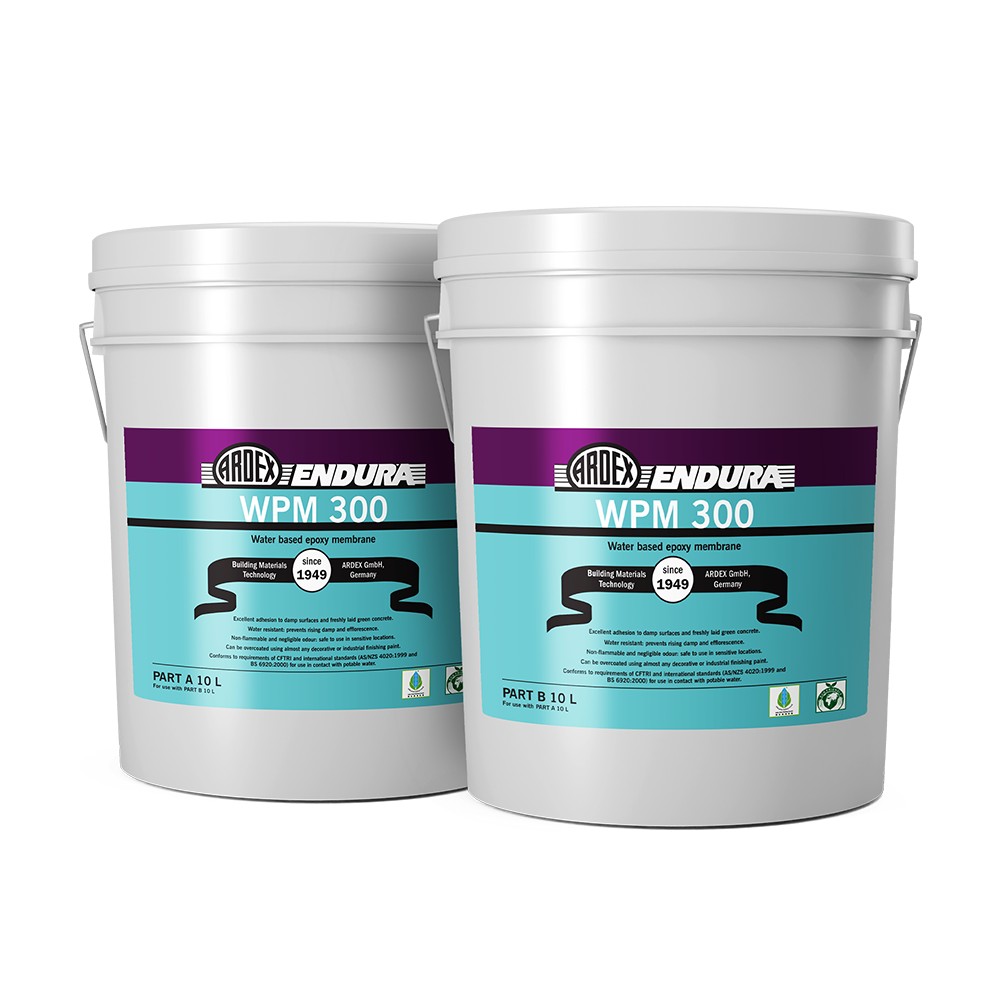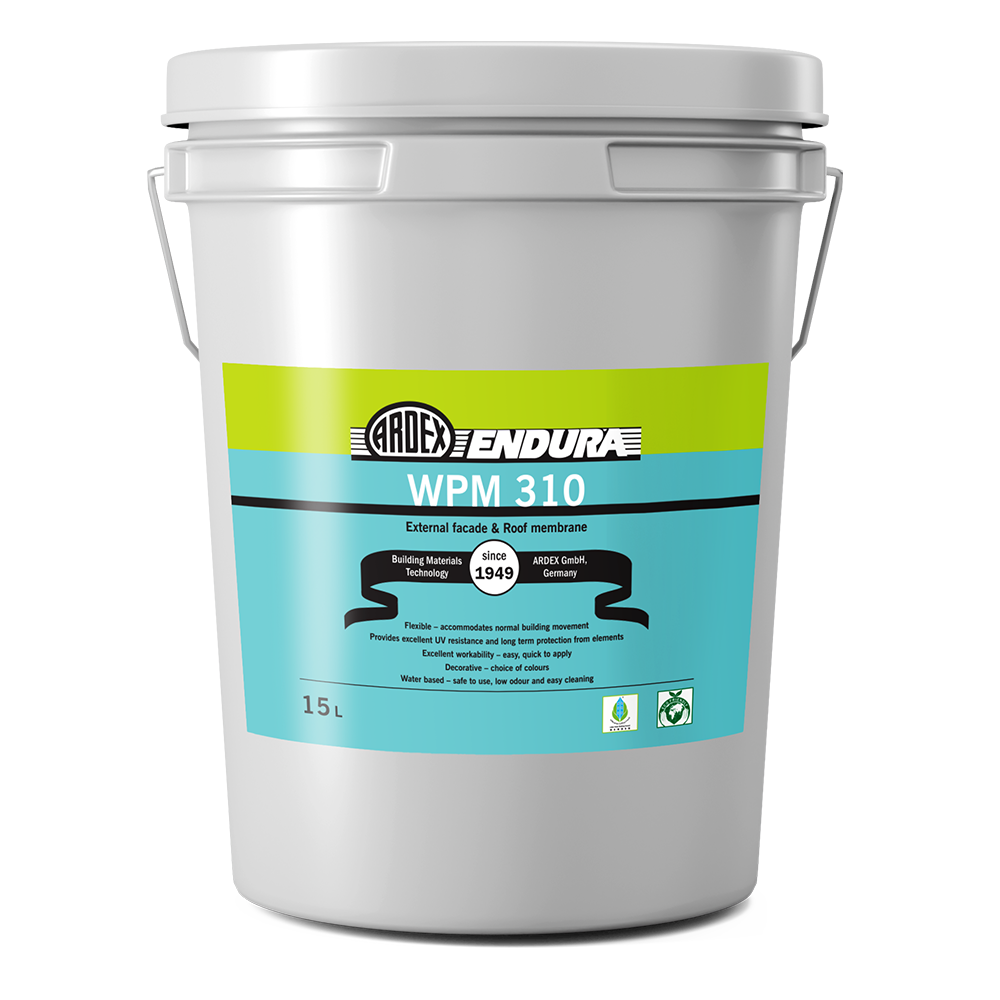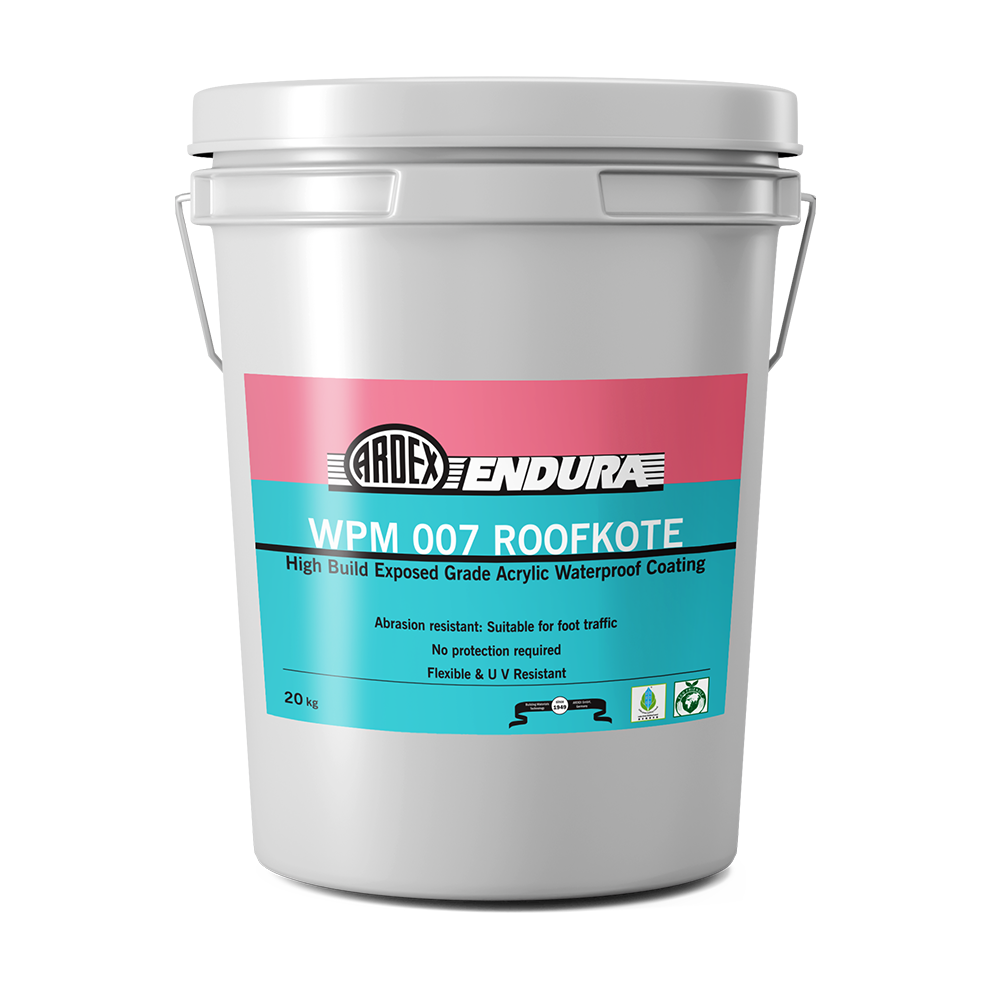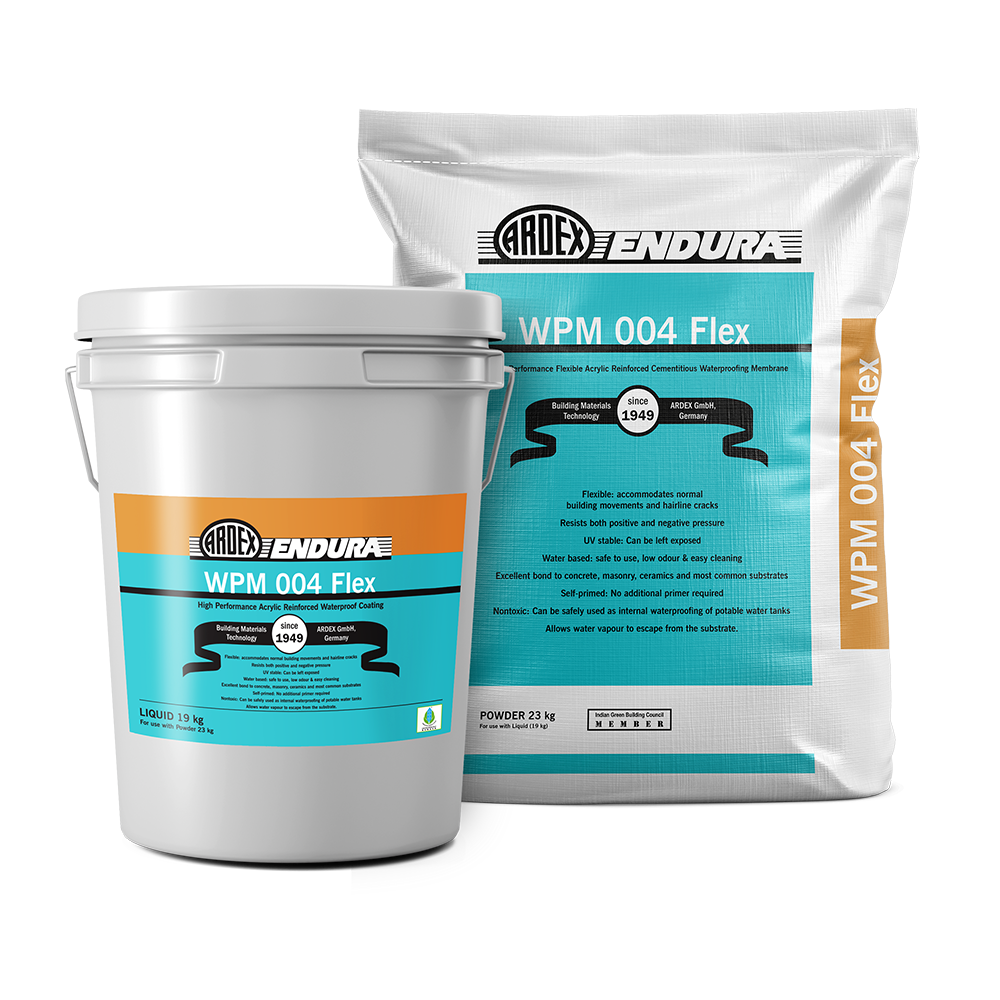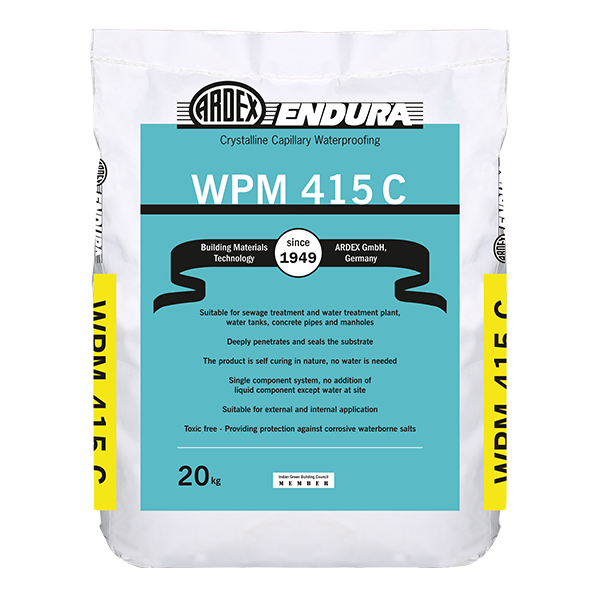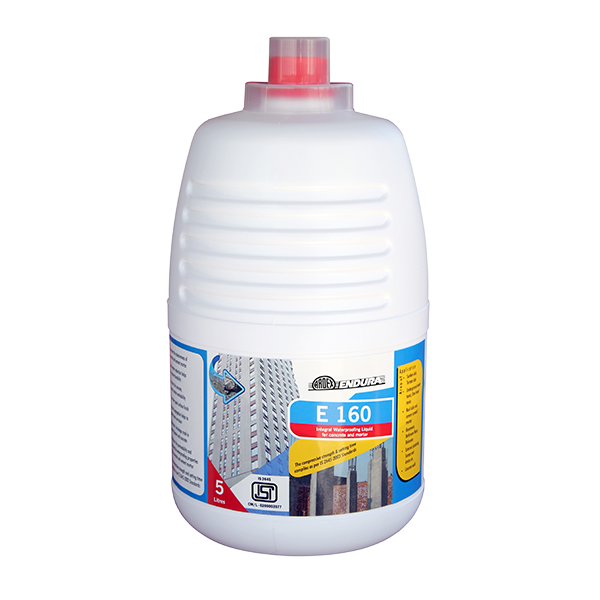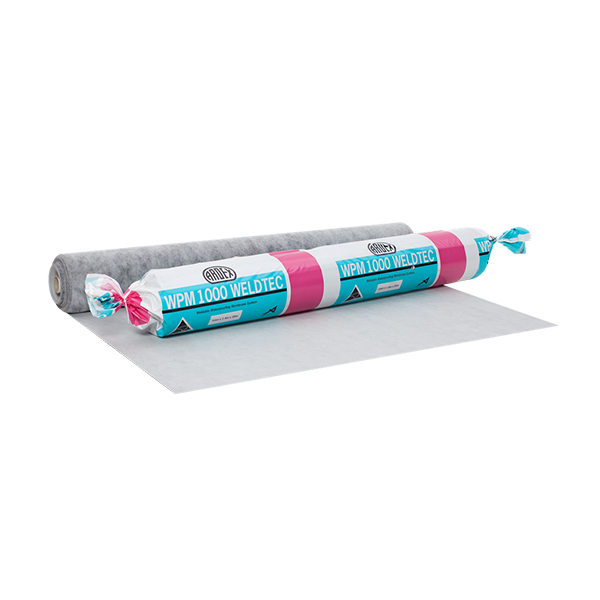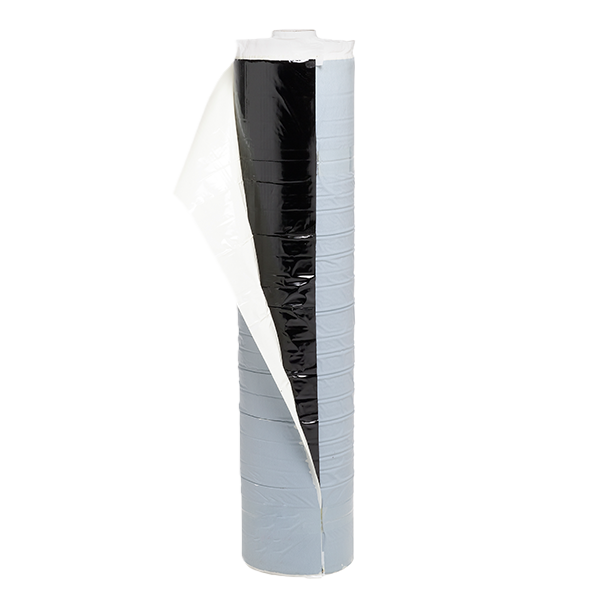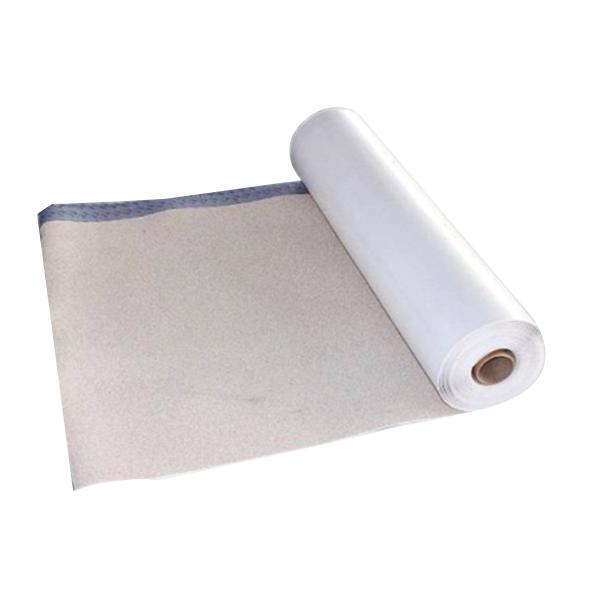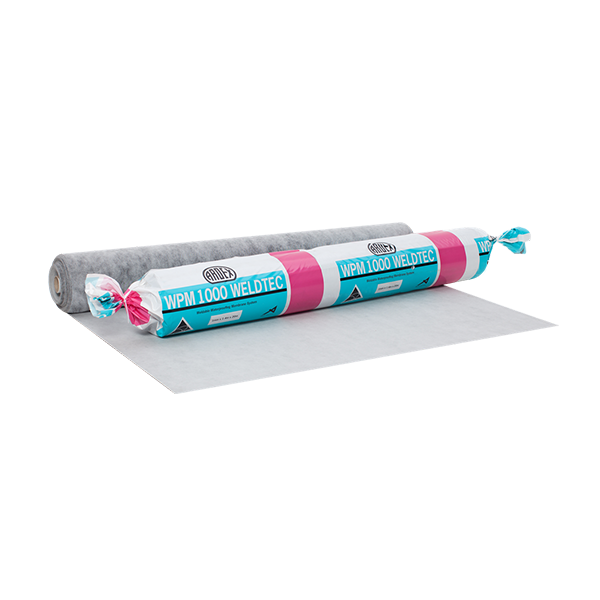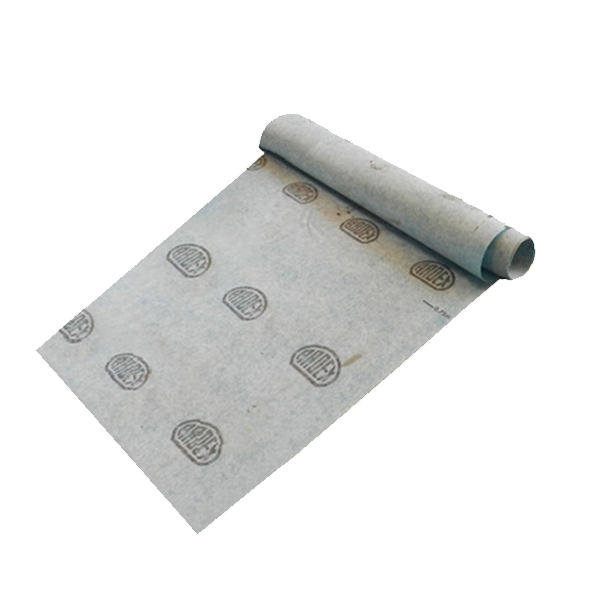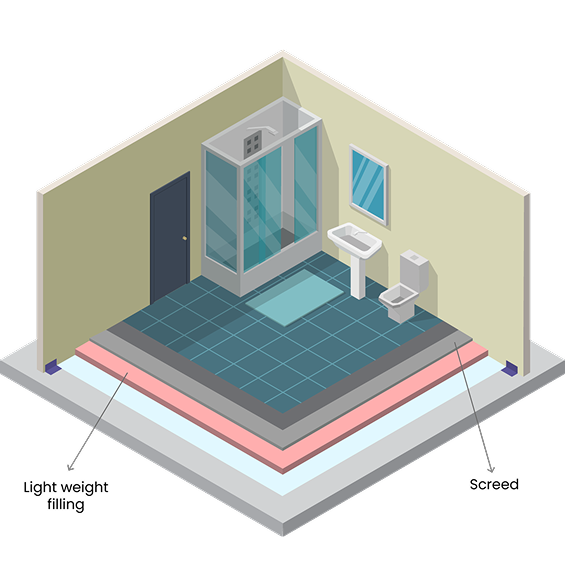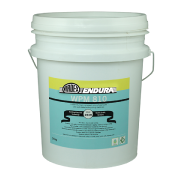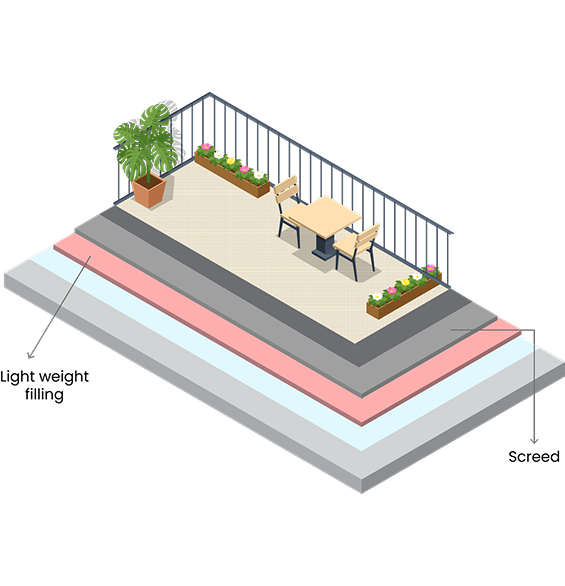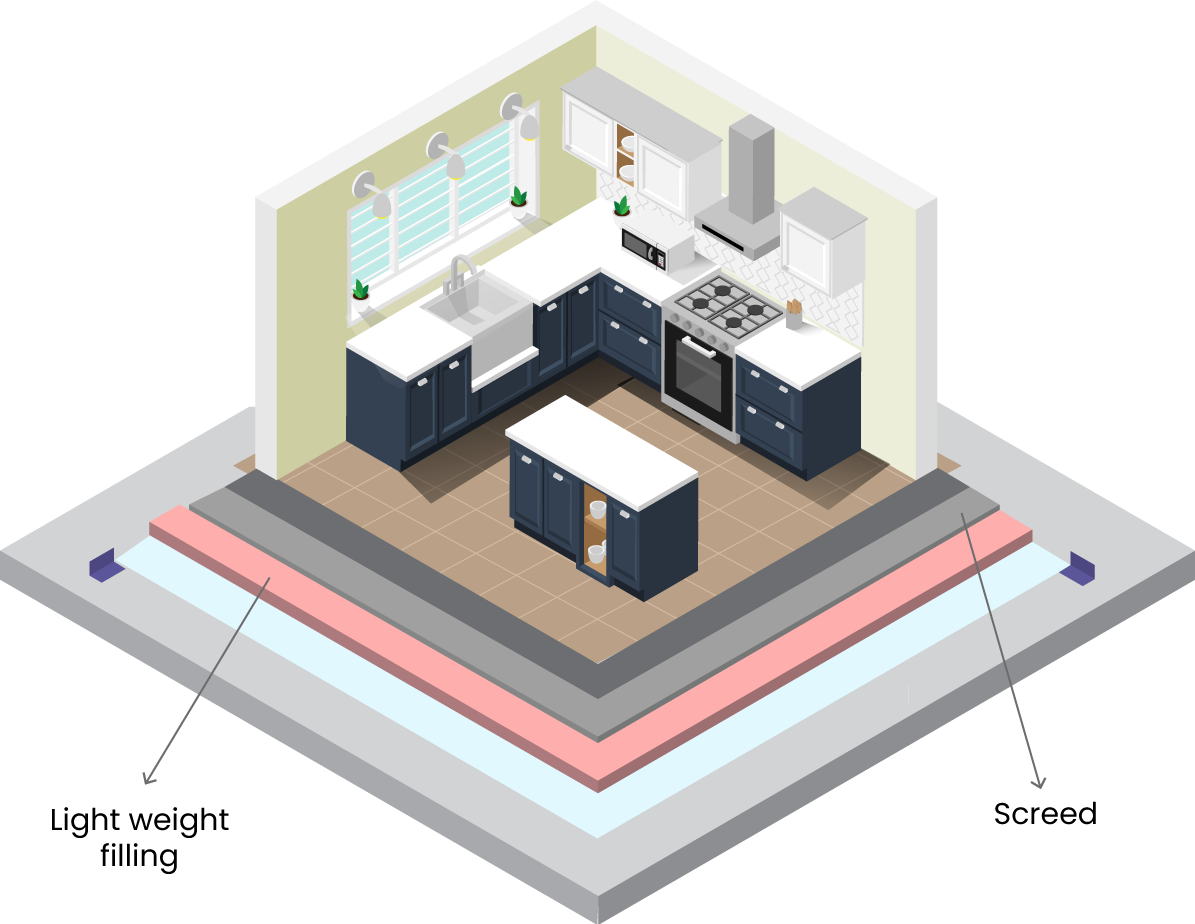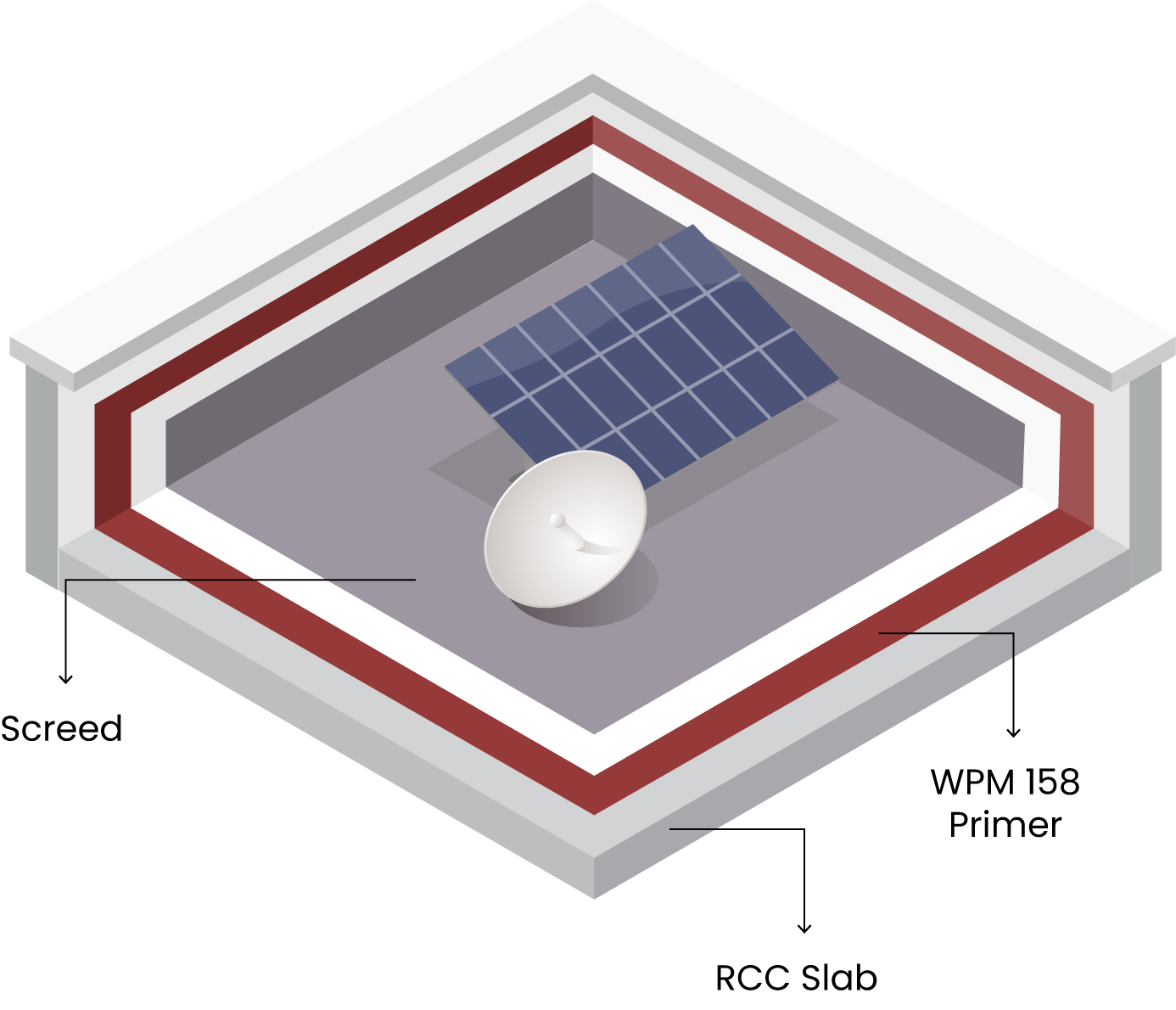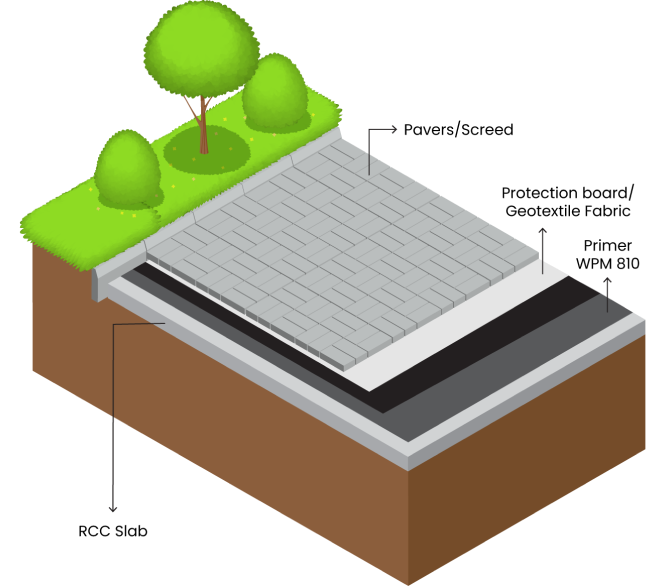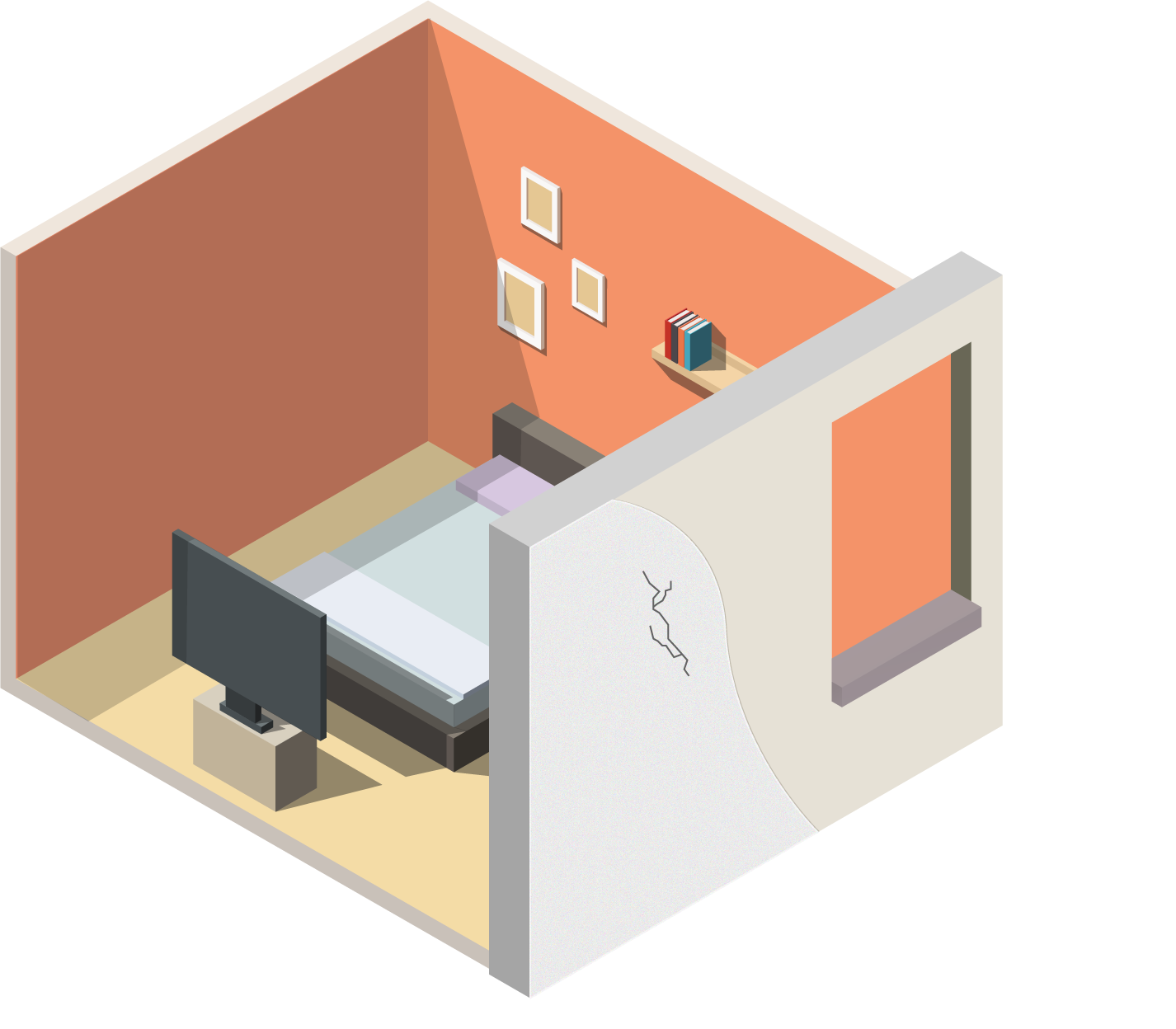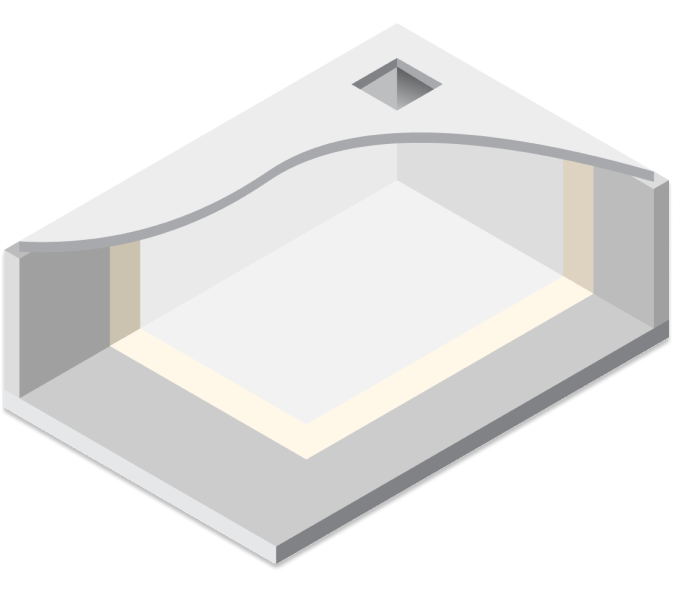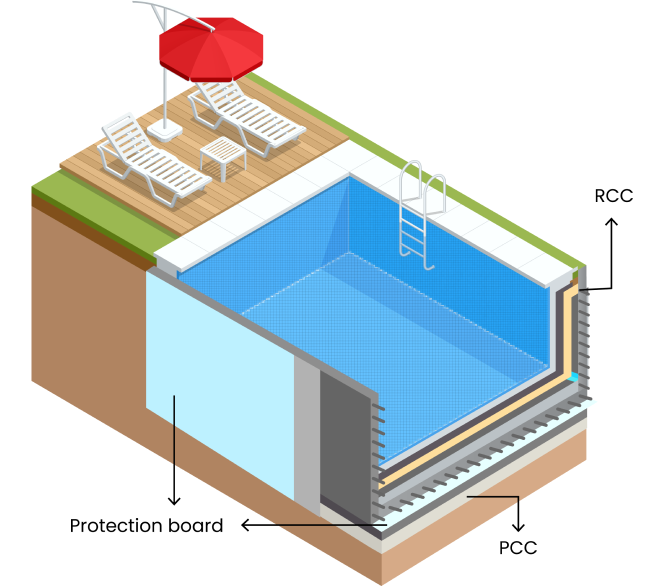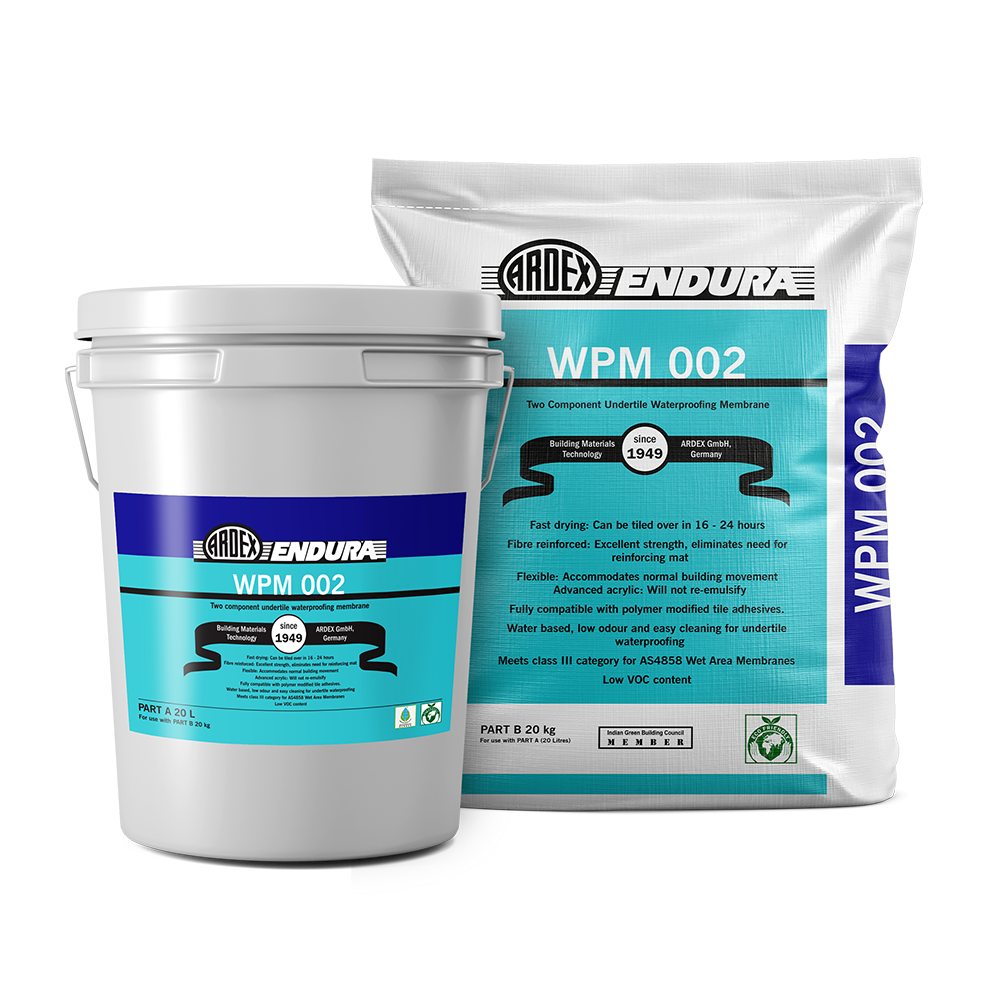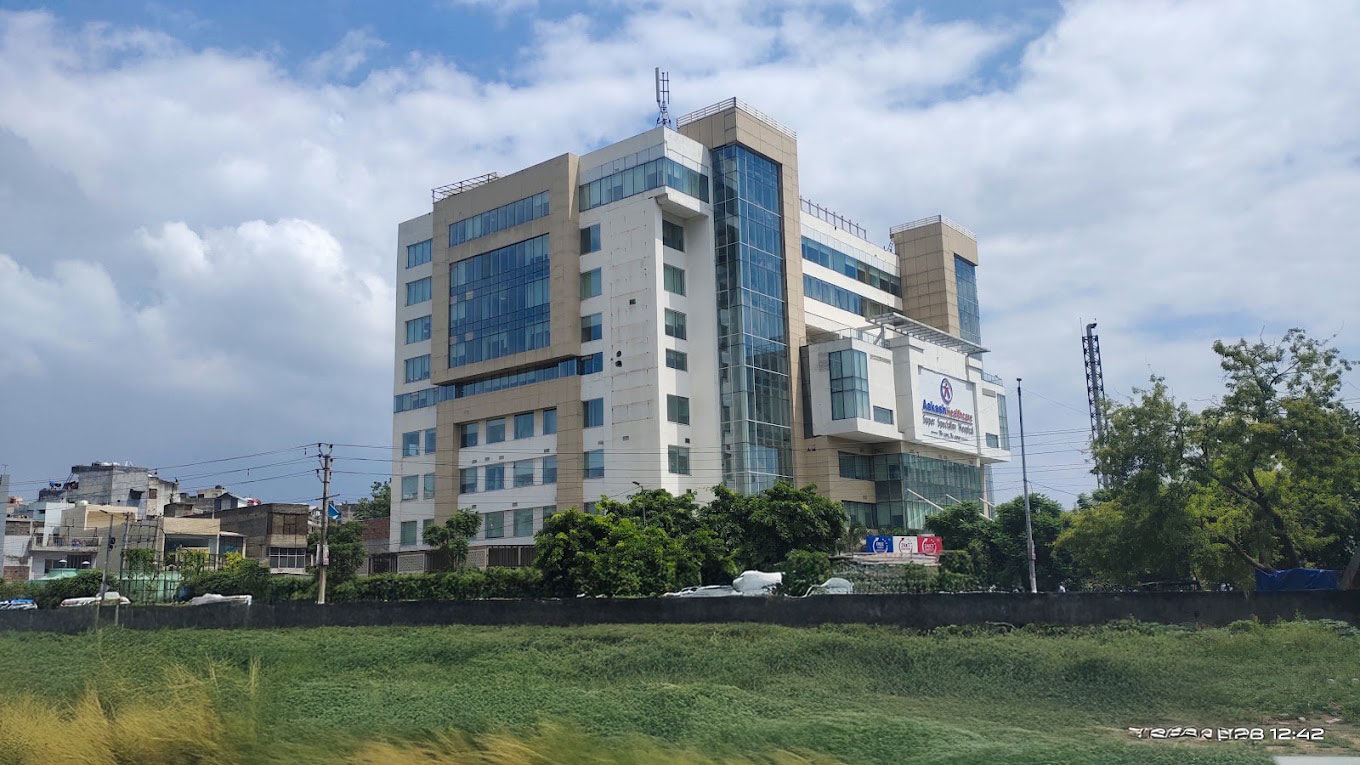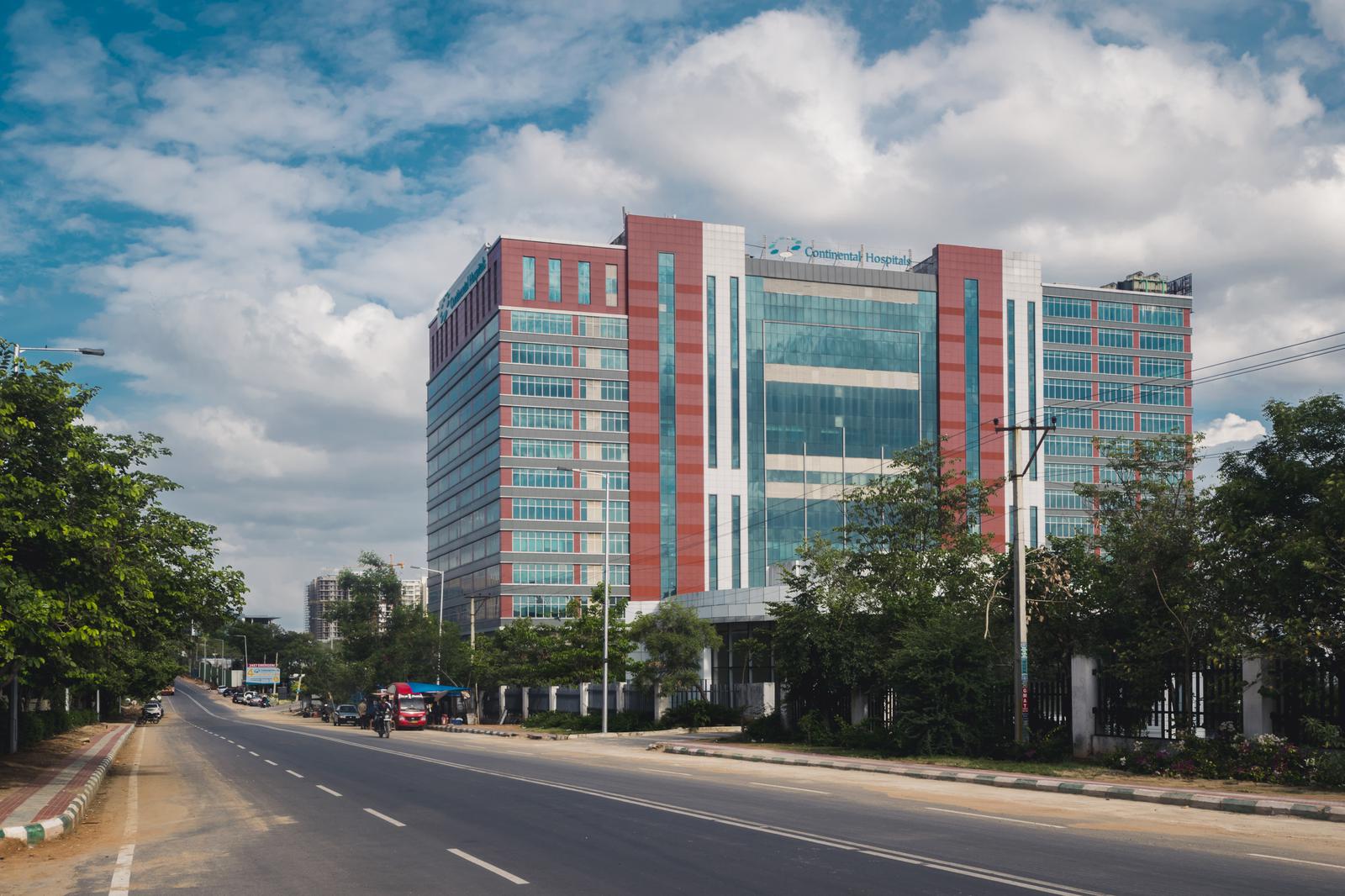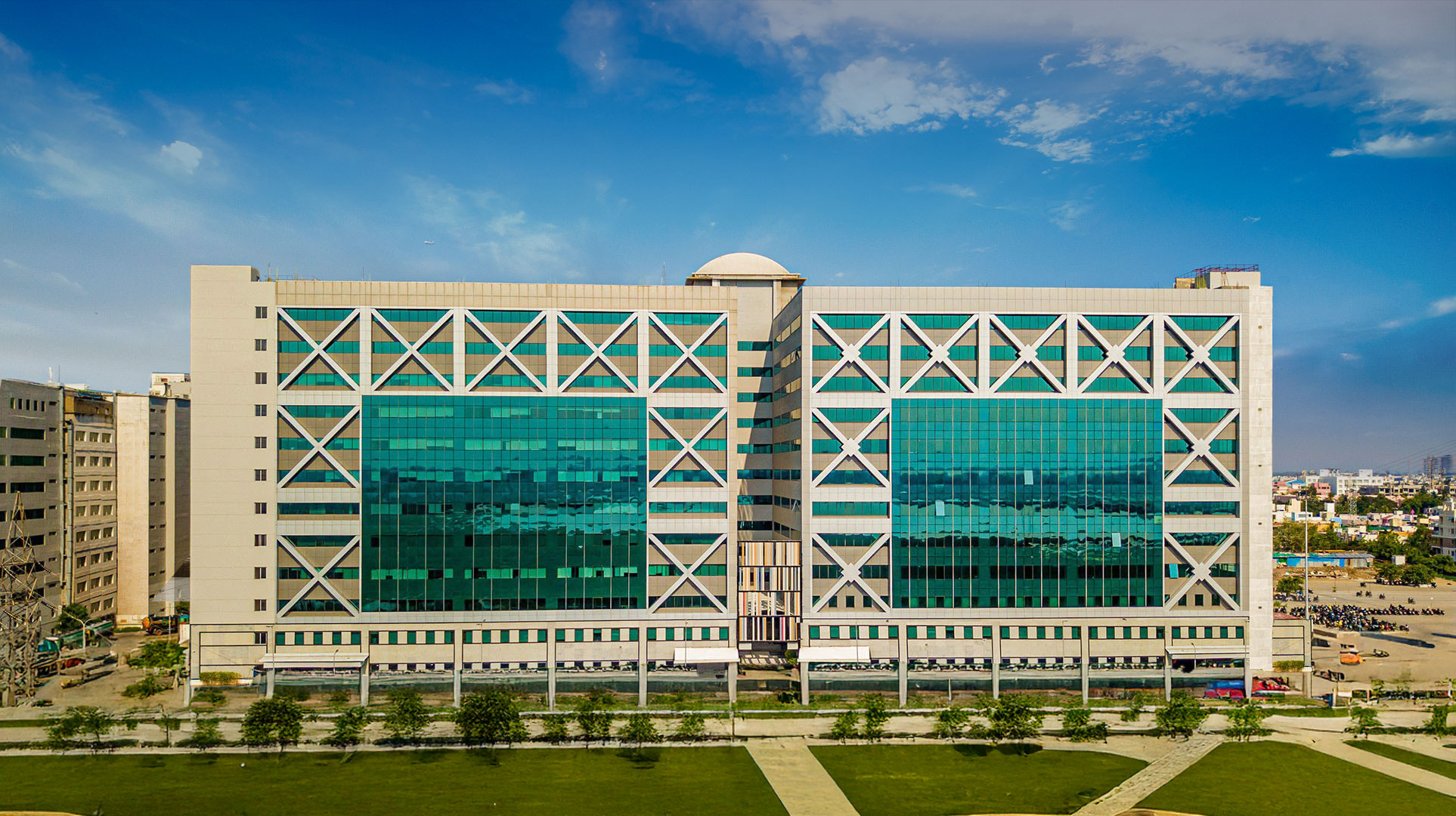Solutions for Bathroom
Waterproofing should be applied in bathrooms during construction for a thorough seal or during renovations if there are signs of dampness or leaks. It's also recommended when upgrading areas exposed to high moisture, like showers and wet rooms.
Solutions for Balcony
Balconies are exposed to rain and temperature changes, making them prone to water seepage through gaps between tiles and cracks. This can cause damp patches, peeling paint, and damage to walls and ceilings below. Applying waterproofing during construction or renovations helps seal these gaps, preventing water damage and ensuring long-term protection.
Solutions for Kitchen
Kitchens are exposed to water spills, steam, and frequent washing, making them prone to seepage through gaps between tiles, countertops, and walls. This can lead to damp patches, mold growth, and damaged cabinets. Proper waterproofing during construction or renovations helps seal these areas, preventing water damage and ensuring a clean and durable kitchen.
Solutions for Terrace
Terraces are exposed to direct rain, standing water, and temperature variations, which can cause seepage through cracks, expansion joints, and tile gaps. Inadequate slopes and drainage systems can worsen the problem, leading to damp patches and leaks in the floors below. Applying a waterproofing layer and sealing joints during construction or renovation is essential to prevent water penetration and ensure long-term durability.
Solutions for Podium
Podiums are exposed to heavy foot traffic, rainwater, and irrigation from landscaping, making them prone to seepage through expansion joints, tile gaps, and cracks. Inadequate drainage systems can cause water to accumulate, leading to damp patches and damage to the structures below. Applying a waterproofing layer and sealing joints during construction or renovation helps prevent water ingress, ensuring the podium's durability and protecting underlying areas.
Solutions for Facade/External Wall
Facades and external walls are exposed to rain, wind-driven moisture, and temperature changes, causing water to seep through cracks, joints, and around windows. Inadequate sealing can lead to damp patches, efflorescence, and peeling paint. Applying waterproof coatings and sealing joints during construction or renovation prevents seepage and ensures long-term protection.
Solutions for Water Tanks
Water tanks are constantly exposed to water pressure, causing seepage through cracks, construction joints, and porous surfaces. Inadequate sealing can lead to water loss, damp patches, and structural damage. Applying internal waterproof coatings and sealing joints during construction or renovation prevents seepage, ensuring the tank remains leak-free and durable.
Solutions for STP/ETP
STP and ETP structures are exposed to constant water pressure, chemicals, and waste, causing seepage through cracks, construction joints, and porous concrete. Inadequate sealing can lead to leaks, contamination of surrounding soil, and structural damage. Applying chemical-resistant waterproof coatings and sealing joints during construction or renovation prevents seepage, ensuring leak-proof and durable performance.
Solutions for Swimming Pool
Swimming pools are exposed to constant water pressure, which can cause seepage through cracks, tile joints, and expansion joints, leading to water loss and structural damage. Applying waterproofing tapes for joints and an internal waterproofing layer during construction or renovation helps seal weak points, preventing leaks and ensuring the pool's durability.
Solutions for Retaining Wall
Apply waterproofing during construction to create a strong barrier against soil moisture and groundwater, especially for walls that need flexibility to accommodate movements. For retaining walls exposed to high water pressure or direct contact with soil, use positive side waterproofing to effectively block water from the outside.
